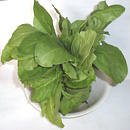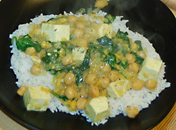What is gout?
Gout is a type of arthritis. It
is caused by having too much of the
chemical, uric acid, in your
bloodstream. Uric acid is the waste
product created when the body
breaks down purines (a type of
protein found in many foods and
all of your cells). Increased levels
of uric acid in your blood may
occur if, for example, your kidneys
cannot efficiently remove it, you
have a rare genetic abnormality, or
because your diet and lifestyle
increase the amount of uric acid that
you produce. If levels of uric
acid are high for prolonged periods,
needle-like crystals can start to
form in your tissues, resulting in
swollen, painful joints.
Your diet plays an important role
in both causing gout and reducing
the likelihood of suffering
further painful attacks of gout. If you
already suffer from gout, eating
a diet that is rich in purines can
result in a five-fold increase in
gout attacks.
Are other illnesses
associated with the
development of gout?
Elevated uric acid is seen in
many other conditions, and people who
have gout may also have raised
cholesterol, raised triglycerides (a
type of fat in your blood), high
blood pressure and poor glucose
tolerance. This may make it more
likely that you have (or will
develop) type 2 diabetes,
metabolic syndrome and kidney disease.
In addition, approximately half
of all gout sufferers are overweight.
Central obesity (carrying weight
around your middle) also increases
certain inflammatory substances
in your blood. This can further
exacerbate gout attacks, as well
as putting you at risk of developing
heart disease, diabetes and
metabolic syndrome. For further
information on gout and related
illnesses, download: All About Gout
and other health problems from
www.ukgoutsociety.org
Can losing weight help
my gout?
Losing weight alone can reduce
blood uric acid levels, and the number
of acute attacks suffered.
Weight-loss will also help to reduce the stress
on weight–bearing joints e.g.
hips, knees, ankles and feet. However, it is
important to avoid any type of
crash dieting, as going without food for
long periods and rapid loss of
weight can increase uric acid levels and
trigger painful gout attacks. A
combination of balanced healthy eating
and regular physical activity is
the best way to lose weight safely and
maintain a healthy weight.
Which foods should be
avoided?
As uric acid is made in the body
from the breakdown of purines that
come from your diet, it is
advisable to reduce the amounts of foods
that you eat that are high
purines.
High purine foods include: (avoid)
•Offal - liver and kidneys, heart and sweetbreads
•Game - pheasant, rabbit, venison
•Oily fish - anchovies, herring, mackerel, sardines, sprats,
whitebait,
trout
•Seafood - especially mussels, crab, shrimps and other shellfish,
fish
roe, caviar
•Meat and Yeast Extracts - Marmite, Bovril, commercial gravy as
well as beer
Moderate purine foods (eat in moderation)
•Meat- beef, lamb chicken, pork
•Poultry - chicken and duck
•Dried peas, beans and legumes - baked beans, kidney beans,
soya beans and peas etc.
•Mushrooms and mycoprotein
(Quorn™)
•Some vegetables - asparagus, cauliflower, spinach
•Wholegrains - bran, oatbran,wholemeal bread
Low purine foods
•Dairy - milk, cheese, yoghurt, butter
•Eggs
•Bread and cereals - (except wholegrain)
•Pasta and noodles
•Fruit and vegetables (see moderate purine list)
How much protein do you
need?
Generally you need about 1g of
protein per kg of body weight (70kg
man only requires 70g of protein
daily), unless you on a protein
restricted diet e.g., some people
with kidney disease may need to
restrict their intake.
Here are some examples of protein
content of food:
•100g (3.5oz) chicken breast
contains 22g protein
•100g cod fillet contains 21g
protein
•Large egg contains 6g
•30g (1oz) hard cheese contains
8g protein
•30g cottage cheese contains 14g
protein
•30g almonds contain 5g protein
Protein is very important part of
your diet, it used for growth and
repair, as well as an energy
source. Not only that, but eating
sufficient protein improves
satiety (how full you feel) as well as
blood sugar control.
However, as its important to use
high purine/moderate protein
foods with caution, then you are
best to combine both animal and
vegetarian sources of protein.
Studies have shown that vegetarian
diets that are high in purines
(e.g. from lentils etc.) are much less
likely to lead to gout.
In addition, red meat is a very
good source of iron and is easily
absorbed by the body. Other foods
such as eggs and pulses contain
iron, but in a form that the body
finds hard to absorb. However, the
absorption of iron can be
improved if you also eat vitamin C - rich
foods in the same meal e.g., add
green and red peppers to
scrambled eggs.
Some people find that certain
foods such as strawberries, oranges,
tomatoes and nuts will trigger
their gout even though they are not
high in purines. Although there
is no clear evidence to suggest
why this happens, it is probably
best to avoid them if you have
had this experience.
Are there any foods
that are good for gout?
Studies have shown that men whose
diet is higher in vitamin C are
less likely to develop gout.
Also, taking additional vitamin C as a
dietary supplement (500 to
1500mg/day) can reduce blood uric
acid levels. This is achieved by
helping to remove uric acid from the
body via the kidneys. If you’re
considering supplementing your diet,
always discuss this with your
doctor as vitamin C can (rarely)
interact with prescribed
medications. High doses of vitamin C can
also cause loose stools in some
people.
Sour cherries or sour cherry
juice have been used as a natural
remedy for gout - and scientific
research has shown that a certain
type of cherry can reduce blood
uric acid levels as well as reduce
the inflammation that occurs with
gout.
Eating healthily is key
Eating a balanced diet is
important for everyone. A healthy diet
helps to control weight and
provides all the necessary nutrients
needed for maintaining good
health. A variety of foods from the
four main food groups should be
eaten every day, this means:
•Plenty of fruit and vegetables – it’s very important to achieve at
least 5-a-day, as fruit and
vegetables provide fibre, vitamins, minerals
and phytonutrients essential for
good health
•Plenty of bread, other cereals and potatoes – try to eat some
whole grains, and use the skin on
potatoes to ensure you get the
vitamins, mineral and fibre you
need
•Moderate amounts of meat, fish and alternatives – avoid
eating large portions – beware
restaurants often serve 8oz of meat
for a main
•Moderate amounts of dairy products – the recommended
amount is three portions of dairy
products daily e.g. 200 ml glass of milk,
a pot of yoghurt and a 30 mg
(matchbox-sized) piece of hard cheese
•Reduce or eliminate highly processed foods and drinks
(see below)
Beware sweetened foods
and beverages
Foods and drinks sweetened with
fructose (often seen labelled as
glucose-fructose syrup or corn
syrup), as well as sweetened soft
drinks, increase the risk of
developing gout, as well as the number
gout attacks.
Sweetened soft drinks, and many
commercial fruit juices (especially
those from concentrate), are a
poor substitute for fruit, as they do
not contain any fibre, and are
effectively ‘empty- calories’.
Also be careful buying jams and
sweetened condiments. Many
manufacturers are now using
glucose-fructose syrup (also known as
high fructose corn syrup), as it
is cheaper than cane or beet sugar.
Diets that are high in refined
(easily digested) carbohydrates for
example, white bread, white
pasta, white rice, biscuits and cakes,
also increase the risk of
developing type 2 diabetes, and are linked
to obesity.
Therefore, try to avoid sweetened
soft drinks, and reduce the
amount of sugar in your diet
other than fresh fruit.
Can I drink alcohol?
Drinking alcohol can increase
your risk of developing gout and can
bring on a sudden attack if you
are already a gout sufferer. Alcohol
can raise the level of uric acid
in the blood in a number of ways and
so trigger a gout attack. Many
beers contain large quantities of
purines from the fermenting
process and alcohol stimulates the
production of uric acid by the
liver. More importantly, however,
alcohol is converted in the body
to lactic acid which interferes with
the removal of uric acid from the
body by the kidneys.
While it is certainly possible
for people with gout to remain well
without becoming teetotal,
reduction in alcohol consumption is very
important particularly if you are
drinking more than the
recommended healthy limit of 21
units per week for men or 14
units per week for women.
1 unit of alcohol is provided by:
•½ pint of standard strength
(3-4% alcohol by volume) beer, lager or
cider
•125ml glass of wine (11%, 100ml
glass of stronger wine)
•Single measure of spirits (25ml)
•Single measure of sherry or
fortified wine (50ml)
Are some types of
alcohol better than others?
A study has shown that the risk
of developing gout is greater in even
moderate regular beer drinkers
than in those who drink equivalent
amounts of alcohol in the form of
spirits or wine. Gout was two and
a half times more frequent in men
who drink two bottles of beer a
day while two glasses of wine
daily was not associated with an
increased risk of developing
gout.
What about reduced alcohol beer?
We are not aware of any specific
studies with low alcohol beers but
it seems probable that they are
less likely to cause gout.
Is there a link between
gout and binge drinking?
Some people say that their gout
attacks follow quickly after a heavy
drinking session. Indeed, it is
well established that binge drinking
may trigger attacks in people who
suffer with gout, even when they
are taking medicines to prevent
them.
Should I drink lots of
water?
Yes, drinking fluids reduces the
likelihood of crystals forming in the
kidneys. As a general rule,
drinking 8 large glasses of fluids a day (1.5
litres) is recommended. All drinks,
except alcohol, count towards
your fluid intake, including
caffeine-containing drinks such as tea and
coffee. Caffeine can act as a
mild diuretic, which means it causes you
to pass urine more often.
However, regular tea and coffee drinkers
develop a natural tolerance to
caffeine and will only experience mild
dehydration if they consume more
than their usual amount. Caffeine
itself may have no direct
influence on the risk of developing gout, as
research has shown that coffee
intake, but not tea, may in some
people be associated with
slightly lower blood levels of uric acid than









